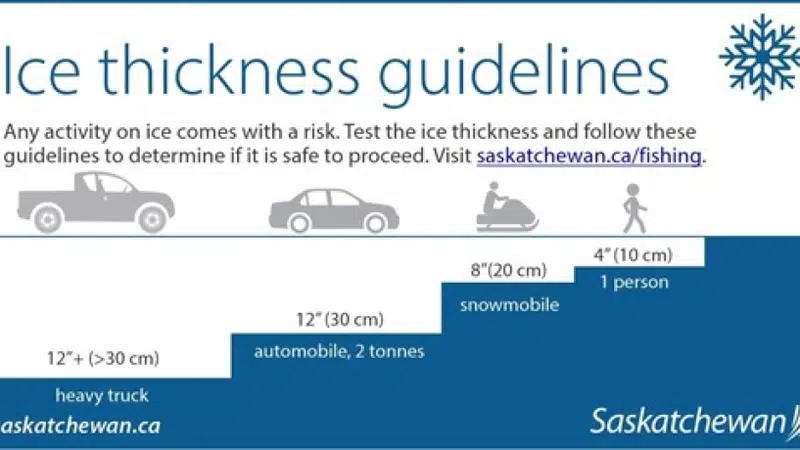
Protect Yourself To Ensure Safety On Ice This Winter
With the arrival of colder temperatures, the Government of Saskatchewan reminds everyone to make sure that ice is safe and thick enough before walking or driving on it. Ice thickness depends on the particular waterbody and the local conditions. It does not freeze at a uniform thickness and ice strength can vary considerably from one area to another.
To be sure, check the ice thickness before you travel on it. As a guideline, you need at least 10 cm (four inches) of ice to walk on, 20 cm (eight inches) to drive a snowmobile or ATV on, 30 cm (12 inches) to drive a car or light truck on, and more than 30 cm (12 inches) to support a heavy truck.
Be aware that any activity on ice has risks. Guidelines are provided to help individuals make a decision about whether to venture on to the ice. Thickness is just one consideration when evaluating ice safety. Clear, hard ice is the only ice recommended for travel.
Also avoid ice that:


